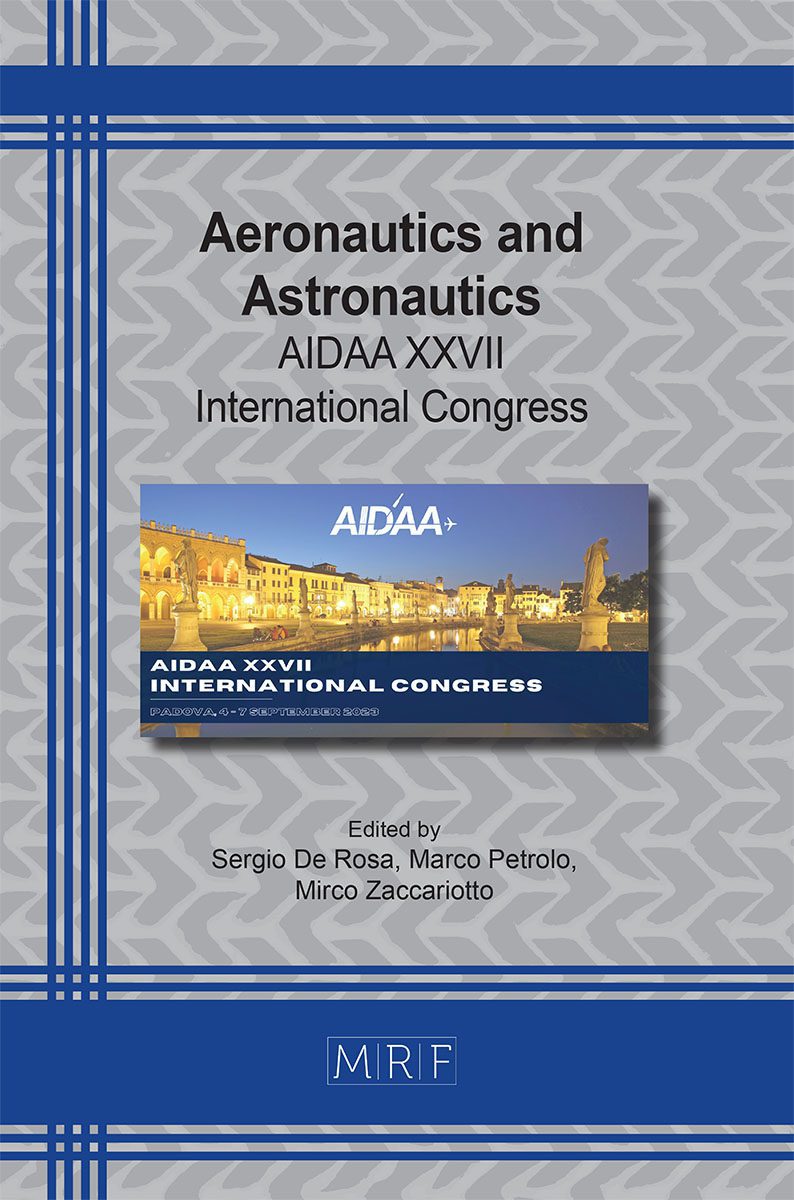DUST mitigation technology for lunar exploration and colonization: existing and future perspectives
Guido Saccone, Nunzia Favaloro
download PDFAbstract. Micrometric dust particles of lunar regolith represent one of the most serious issues of the harsh moon environment. Indeed, the extremely high vacuum conditions expose the lunar soil minerals to intense ultraviolet and galactic cosmic rays’ bombardment during the Moon’s daylight producing photoionization of the constituent’s atoms and electron release. Moreover, Moon periodically interacts with the surrounding solar wind which generates a continuous flux of charged particles is generated accompanied by electric fields around the terminator region able to lift off the lunar regolith dust up to ~100 km above the geometrical surface. In this way, micrometric granular matter forms a subtle veil of contaminants. This electrically charged and extremely adhering dust environment can cause various critical drawbacks not only to several robotic parts e.g., mechanical components, electronic devices, solar panels, thermal radiators, rovers seals and bearings, etc. but also can dramatically damage the respiratory systems of humans if accidentally inhaled. For these reasons, lunar dust was recognised, by several agencies including NASA and ESA, as one of the main potential showstoppers for the ongoing robotic and manned exploration and colonization of our natural satellite. For overcoming or at least mitigating these issues, several technologies were developed and assessed ranging from the active ones requiring a source of energy e.g., mechanical, fluidal and, above all, electric devices, to the passive technologies involving suitable material design and development. In the work here reported, the design and development of innovative high-performance polymers simultaneously exhibiting outstanding thermo-mechanical properties and superior non-sticking capacity i.e., abhesion to be applied for structural purposes on the Moon is presented. Further improvement of these suitable designed materials with the addition of appropriate electric properties will make them ideal candidates as dielectric substrates of a combined passive and electroactive system able to repel micrometric regolith particles i.e., lunar dust shield.
Keywords
Moon, Dust Mitigation, Space Exploration, High-Performance Polymers
Published online 11/1/2023, 4 pages
Copyright © 2023 by the author(s)
Published under license by Materials Research Forum LLC., Millersville PA, USA
Citation: Guido Saccone, Nunzia Favaloro, DUST mitigation technology for lunar exploration and colonization: existing and future perspectives, Materials Research Proceedings, Vol. 37, pp 266-269, 2023
DOI: https://doi.org/10.21741/9781644902813-58
The article was published as article 58 of the book Aeronautics and Astronautics
![]() Content from this work may be used under the terms of the Creative Commons Attribution 3.0 license. Any further distribution of this work must maintain attribution to the author(s) and the title of the work, journal citation and DOI.
Content from this work may be used under the terms of the Creative Commons Attribution 3.0 license. Any further distribution of this work must maintain attribution to the author(s) and the title of the work, journal citation and DOI.
References
[1] Wohl, C.J., Atkins, B.M., Belcher, M. A., Connell, J.W., Copoly(imide siloxane) Abhesive Materials with Varied Siloxane Oligomer Length, International SAMPE Symposium and Exhibition (Proceedings), (2010).
[2] Fateri, M., Gebhardt, A., Gabrielli, R.A., Herdrich, G., Fasoulas, S., Groβmann, A., Schnauffer, P., Middendorf, P., Additive Manufacturing of Lunar Regolith for Extra-terrestrial Industry Plant, 30th ISTS Conference, Kobe, Japan, (2015).
[3] Taylor, L.A., Schmitt, H.H., Carrier, W.D., Nakagawa, M., The Lunar Dust Problem: From Liability to Asset, in 1st Space Exploration Conference: Continuing the Voyage of Discovery, American Institute of Aeronautics and Astronautics, Orlando, FL., (2005). https://doi.org/10.2514/6.2005-2510
[4] Abbas, M., Tankosic, D., Craven, P.D., Spann, J.F., LeClair, A., West, E.A., Lunar dust charging by photoelectric emissions, Planetary and Space Science 55, 953-965, (2007). https://doi.org/10.1016/j.pss.2006.12.007
[5] Stubbs, T.J., Vondrak, R.R., Farrell, V.M., A dynamic fountain model for lunar dust, Advanced in Space Research 37, 59-66, (2006). https://doi.org/10.1016/j.asr.2005.04.048
[6] Afshar-Mohajer, N., Wu, C.-Y., Curtis, J., Gaier, J. R., Review of Dust Transport and Mitigation Technologies in Lunar and Martian Atmospheres, Advances in Space Research, (2015). https://doi.org/10.1016/j.asr.2015.06.007
[7] Calle, C.I., Buhler, C.R., McFall, J.L., Snyder, S.J., Particle removal by electrostatic and dielectrophoretic forces for dust control during lunar exploration missions, Journal of Electrostatics 67, 89-92, (2009). https://doi.org/10.1016/j.elstat.2009.02.012
[8] Gaier, J.R., The effects of lunar dust on EVA systems during the Apollo missions, NASA/TM 213610: (2005).
[9] Goodwin, R., 2002. Apollo 17: The NASA Mission Reports, vol. 1. Apogee Books, Ontario, Canada.































